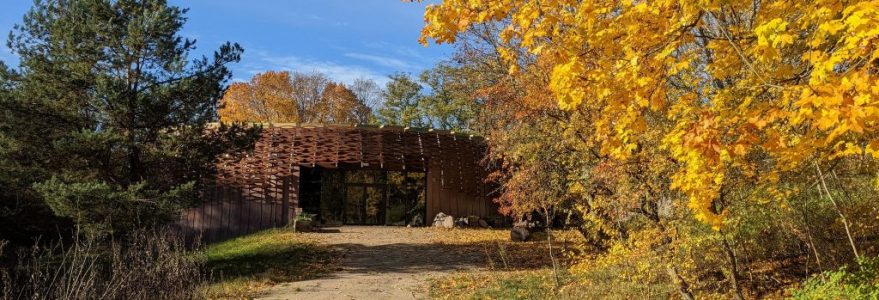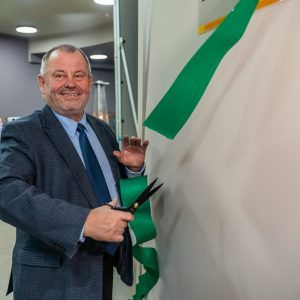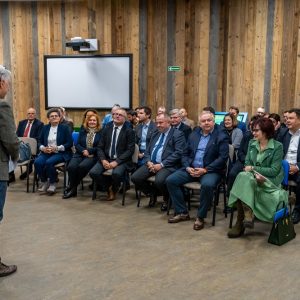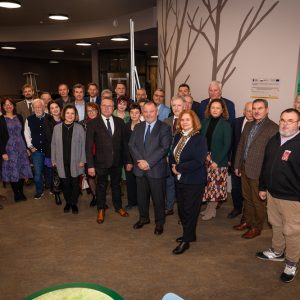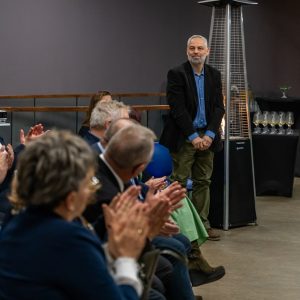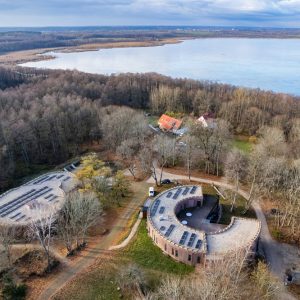“Today, we have opened a teaching and research centre that will also contribute to the nature protection. The University must shape the life culture and cooperation,” said Prof. Alojzy Z. Nowak, Rector of the University of Warsaw, at the opening ceremony of the KUMAK Masurian Center for Biodiversity and Nature Education in Urwitałt.
Urwitałt is a settlement in the Warmińsko-Mazurskie Voivodeship on Lake Łuknajno, located seven km from Mikołajki. Since the 1970s, it housed the Field Station of the UW. In 2020, the Station became a faculty-wide unit (the UW’s Faculty of Biology).
Thanks to the implementation of the “Masurian Center for Biodiversity and Nature Education in Urwitałt” project, the University of Warsaw unit was refurbished, and its official opening took place on 23rd November.
KUMAK” was established primarily to contribute actively to nature conservation.
Today, we have opened a teaching and research centre that will also contribute to nature protection. The University must shape the life culture and cooperation,” said Prof. Alojzy Z. Nowak, the Rector of the University of Warsaw, at the opening ceremony of the KUMAK Masurian Center for Biodiversity and Nature Education in Urwitałt.
Conservation through education is one of the most important aspects of this project. Without public acceptance, it is difficult to protect animal species and endangered habitats. I hope that children and young people from the region, but also from all over Poland, will use the Center and learn about the Great Masurian Lakes Region,” Grzegorz Górecki, the head of the Center, stressed.
A team of scientists working in the Center is responsible for shaping ecological awareness at local, regional and national levels, popularising knowledge about the natural environment of the Warmia and Mazury region. It also undertakes activities to improve water conditions in the vicinity of Lake Łuknajno.
Two buildings
KUMAK is a complex of two buildings. The first has an educational function. It houses a modern exhibition that showcases the Warmia and Mazury nature and its relationship with people. The theme of the exhibition concerns small water reservoirs and wetland ecosystems.
Visitors can find modern exhibits that introduce them to the subject of water and mud in an accessible and engaging way. The display contains attractively arranged aquariums and terrariums presenting selected animals from the region.
Each passion derives from admiration. We intend to show biology as a subject never wearing yet delighting. Through its biological biodiversity of small regions, this exhibition is expected to contribute to this aim,” Prof. Krzysztof Spalik, the Dean of the Faculty of Biology, said.
The second building has a didactic function, housing laboratories and a seminar hall. It is mainly used for educational activities and scientific research in the broad field of environmental sciences.
Both buildings merge into the surroundings while their walls are covered by plants. The structure uses such innovative ecological and technical solutions as prefabricated elements, capillary mats, solar deep-well pumps, sullage systems.



